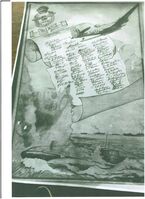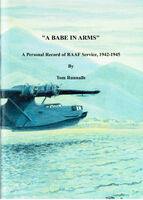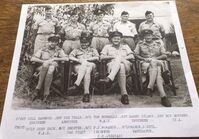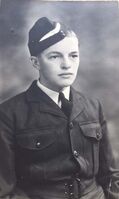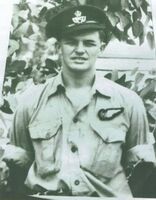Warrant Officer Tom Hodge RUNNALLS
Tom Hodge Runnalls was born on the 9th July 1924 in Bodmin, England.
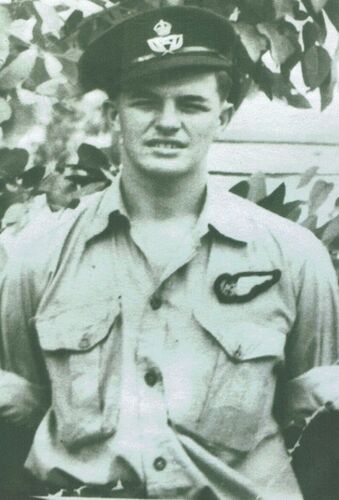 By 1929 his family had emigrated to Australia and settled in the Bendigo area. After leaving school Tom secured an appointment with the Commonwealth Public Service as a Junior Clerk. His first position was with the Wartime Department of Munitions at the Ammunitions Factory at Footscray followed by a transfer to the Ordnance Factory at Bendigo. Here the major manufacture was to be 4-inch naval guns for the RAN.
By 1929 his family had emigrated to Australia and settled in the Bendigo area. After leaving school Tom secured an appointment with the Commonwealth Public Service as a Junior Clerk. His first position was with the Wartime Department of Munitions at the Ammunitions Factory at Footscray followed by a transfer to the Ordnance Factory at Bendigo. Here the major manufacture was to be 4-inch naval guns for the RAN.
Tom joined the local ATC [Air Training Corps] and later after the outbreak of WW2 at the age of 18, enlisted in the RAAF. After completing his Initial Training at No.1 ITS Somers, Tom was posted to No. 1 WAGS at the Ballarat aerodrome. He completed Course 32, November 1942 to April 1943, finishing 4th in his Course. The following is an excerpt from Tom Runnall's book 'A BABE IN ARMS' A Personal Record of RAAF Service, 1942-1945.
After slogging away at the Morse Code and wireless theory for an earth bound five months, the eventuality which we were eagerly awaiting finally arrived. we were about to take to the air! Admittedly the training aircraft used, two-man wacketts, were rather insignificant and unwarlike, but at least they could get us into the air. Whilst in the cramped confines of the rear cockpit, it was imperative not to lose one's essential recording equipment - a small lead pencil! To ensure its safety, the pencil was secured to a piece of string which in turn was tired to the top button of one's overalls, standard dress for trainees while on station. During waking hours, the pencil was kept in the breast pocket with the retaining string prominently displayed, a la old-fashioned watch chain. This signified that we were the top dogs - the graduating course, actually flying. Service life seemed to foster such little foibles, class distinctions seemed important.
An excerpt after Tom's first flight.
From then on it was plain sailing as we wrestled with our equipment flying across such exotic locations as Bendigo, [OGIDNEB], Colac [CALOC], Clunes [SENULC] etc. Note the coding used to ensure that the enemy were kept unaware of our whereabouts. these flights became almost enjoyable despite struggling with recalcitrant wireless sets and incipient airsickness when turbulence was encountered.
He then travelled to No. 2 BAGS [Bombing Air Gunners School] to complete the gunnery section of his course.
Tom fully expected to be posted to Bomber Command in the U.K; however, with the threat from the Japanese to Australia, he was held back and posted to No. 2 ANS, (Air Navigation School), at Cootamundra. Here Tom belonged to staff ‑ WAGS manning the wireless equipment installed to receive and send messages and in doing so guide pilots’ home. After a stint at No. 2 Transit Depot at Bradfield Park, Sydney, Tom was posted to No. 3 Operational Training Unit Rathmines for training on Catalina Flying Boats. Due to the complexity of training, Tom spent 5 months at Rathmines.
Tom was then posted to No. 20 Squadron in Cairns as a crew member of the Catalina Flying Boats. During the early critical months of the Pacific War, Catalina Flying Boats of RAAF No 11 and 20 Squadrons played a significant part in slowing the initial Japanese advance. Armed with bombs, depth-charges, mines or torpedoes, The Catalinas flew to the Solomons, New Britain, New Guinea and the Netherlands East Indies and eventually to the Palaus, the Philippines, Formosa and China. From all Australian Catalina operations in the South West Pacific sector 320 airmen failed to return.
Operations that Tom’s crew were involved in were to mine Japanese harbours in the Caroline Islands. His plane and crew were based on a US Navy Sea plane Tender “USS Tangier” moored off Manus Island NE of New Guinea. By 1944 Tom was posted to Darwin to continue crewing in Catalina Flying Boats with further mine laying operations and served with No. 43 Squadron in the N.W Area from July 1944 until May 1945.
Tom was discharged on the 19th September 1945.
Tom writes in the forward of his book –
In the Weekend Australian Of June 22-23, 2002, there appeared a critique of a book written about the exploits of the Catalina Flying Boat Squadrons operating in the Pacific Area during World War 11.
Originally designed in the USA as a naval patrol and reconnaissance aircraft, Catalinas were employed by the RAAF as bombers, torpedo bombers, and for ‘search and rescue’ and special operations. Probably their most outstanding contributions were their mine-laying operations, carried out into enemy harbours from New Guinea to the then Dutch East Indies, the Philippines and finally to the China Coast.
The critique described those crew who flew in them, as they are today-
“ The now fading men who crewed these flying boats – most half deaf still from the noise of the engines.” That description now most aptly describes myself.
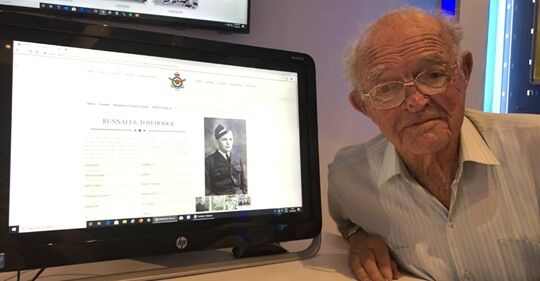
Warrant Officer Tom Runnalls was the guest at the launch of the 1 W.A.G.S Memorial Website on the 11th February 2020.
At the age of 95 he represented all 1 W.A.G.S trainees who served in the RAAF during WW2. Those who made the ultimate sacrifice and those who returned to their families. Nineteen of the ninety-two trainees in Tom’s Course 32 were killed.
Tom Runnalls passed away on the 16 September 2022 at the age of 98.

